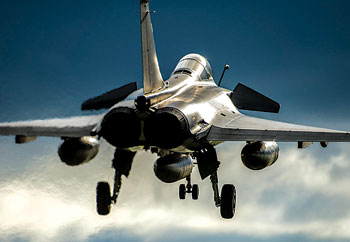INDIAN ARMED FORCES CHIEFS ON OUR RELENTLESS AND FOCUSED PUBLISHING EFFORTS

The insightful articles, inspiring narrations and analytical perspectives presented by the Editorial Team, establish an alluring connect with the reader. My compliments and best wishes to SP Guide Publications.

"Over the past 60 years, the growth of SP Guide Publications has mirrored the rising stature of Indian Navy. Its well-researched and informative magazines on Defence and Aerospace sector have served to shape an educated opinion of our military personnel, policy makers and the public alike. I wish SP's Publication team continued success, fair winds and following seas in all future endeavour!"

Since, its inception in 1964, SP Guide Publications has consistently demonstrated commitment to high-quality journalism in the aerospace and defence sectors, earning a well-deserved reputation as Asia's largest media house in this domain. I wish SP Guide Publications continued success in its pursuit of excellence.
- Indian Air Force Aims for Full Indigenous Inventory by 2047 — Air Chief Marshal A.P. Singh
- General Upendra Dwivedi takes over as the Chief of the Army Staff
- Rajnath Singh assumes charge as Defence Minister for the second consecutive term
- Admiral Dinesh K. Tripathi assumes Command of the Indian Navy as 26th Chief of the Naval Staff
- Prime Minister witnesses 'Bharat Shakti' – a Tri-Services Firing and Manoeuvre Exercise in Pokhran, Rajasthan
Rafale F3.4 tested in Istres

From October 6 to 17, 2014, French Air Force personnel from the integrated flight test team (EIEV) at Istres airbase and the Rafale programme office at the air force operational trials unit (CEAM) at Mont-de-Marsan airbase evaluated a new release of the Rafale F3 standard.
Designated F3.4+, the new standard being developed by industry under the responsibility of the Directorate General of Armaments (DGA), is part of the programme’s continuous improvement process. It takes into account the feedback from recent operational deployments, and contributes to the permanent improvement of flight safety. Experts from the EIEV and CEAM form the core of initial users, and monitor the deployment of the new system. “For two weeks, we carried out flight tests,” said Major Mathieu Rigg, chief of the Rafale programme office’s detachment at Istres. “The aircraft will then be flown to Mont-de-Marsan for the final testing phase before its service introduction.”
The F3.4+ standard includes many software improvements, such as improved capture and conversion of NATO-standard geographical coordinates (in MGRS format), which save time and significantly reduce crew workload. In the field of flight safety, a new instrument will allow pilots to better evaluate the aircraft’s attitude, and will sound an alarm when it detects an unusual position. Likewise, during the take-off phase, another alarm will ensure the aircraft does not exceed the maximum energy that can be handled by its landing gear brakes, which is a valuable aid to manage aborted take-offs. Finally, “in terrain- following mode, the F3.4+ standard introduces a new control to switch, in real time, from radar mode to digital mapping,” adds Major Rigg.
During the evaluation phase, which comprised 20 flight hours, pilots from CEAM and EIEV defined the boundaries of the expanded flight envelope before revising the operational flight manual.
The new F3.4+ standard of Rafale should enter operational service in early 2015.





